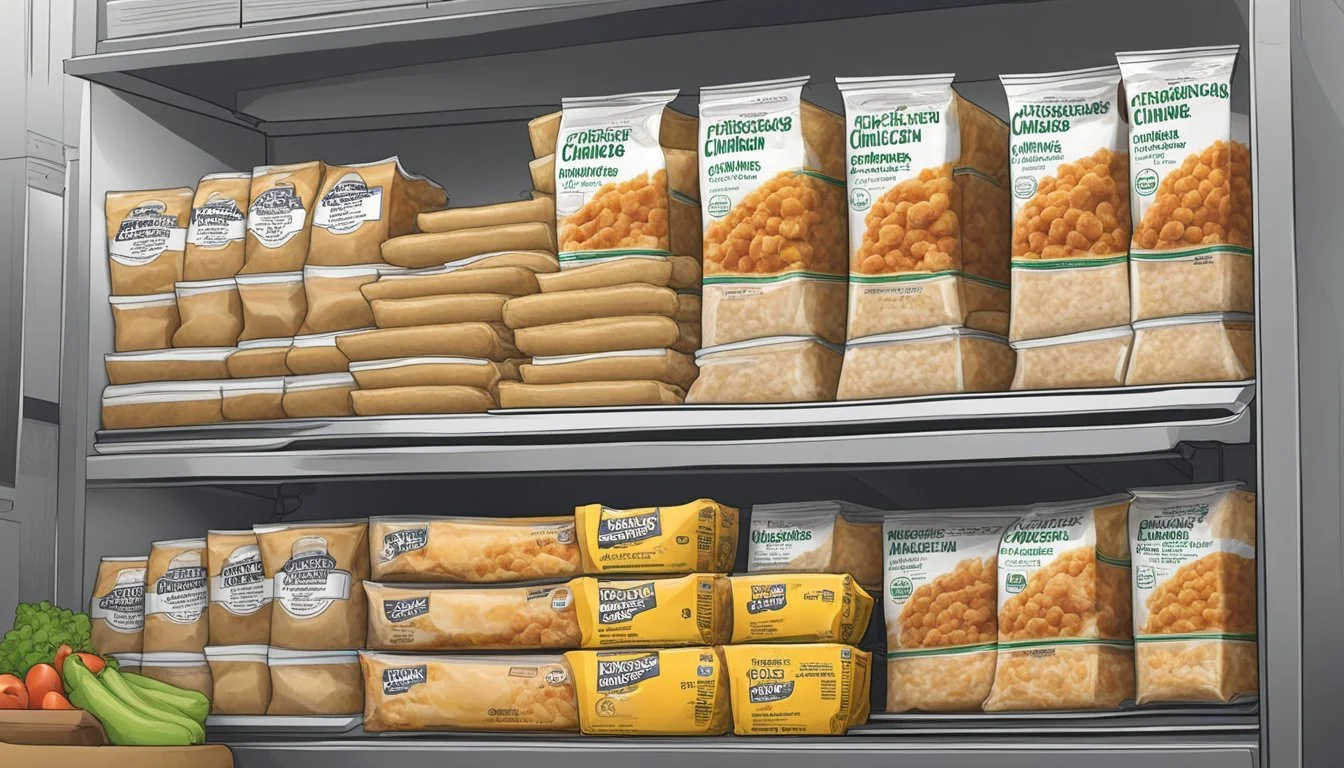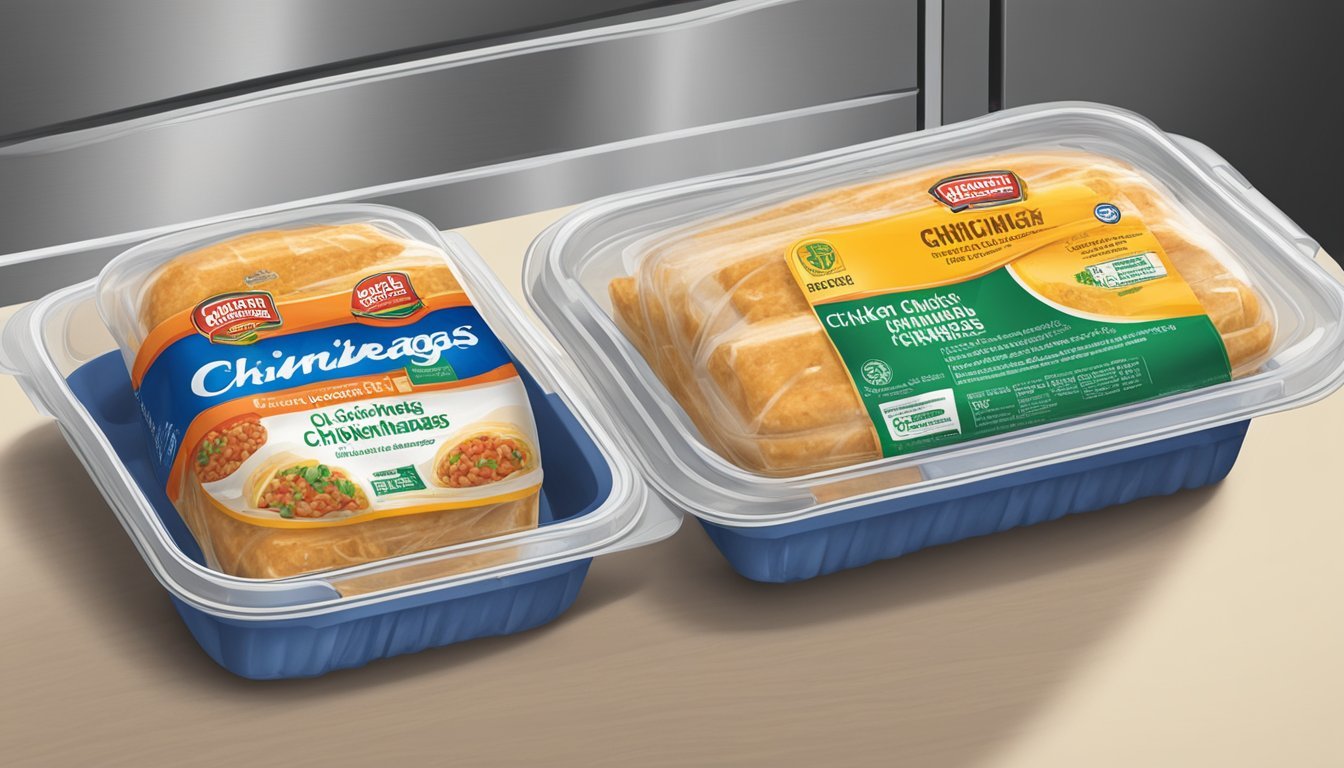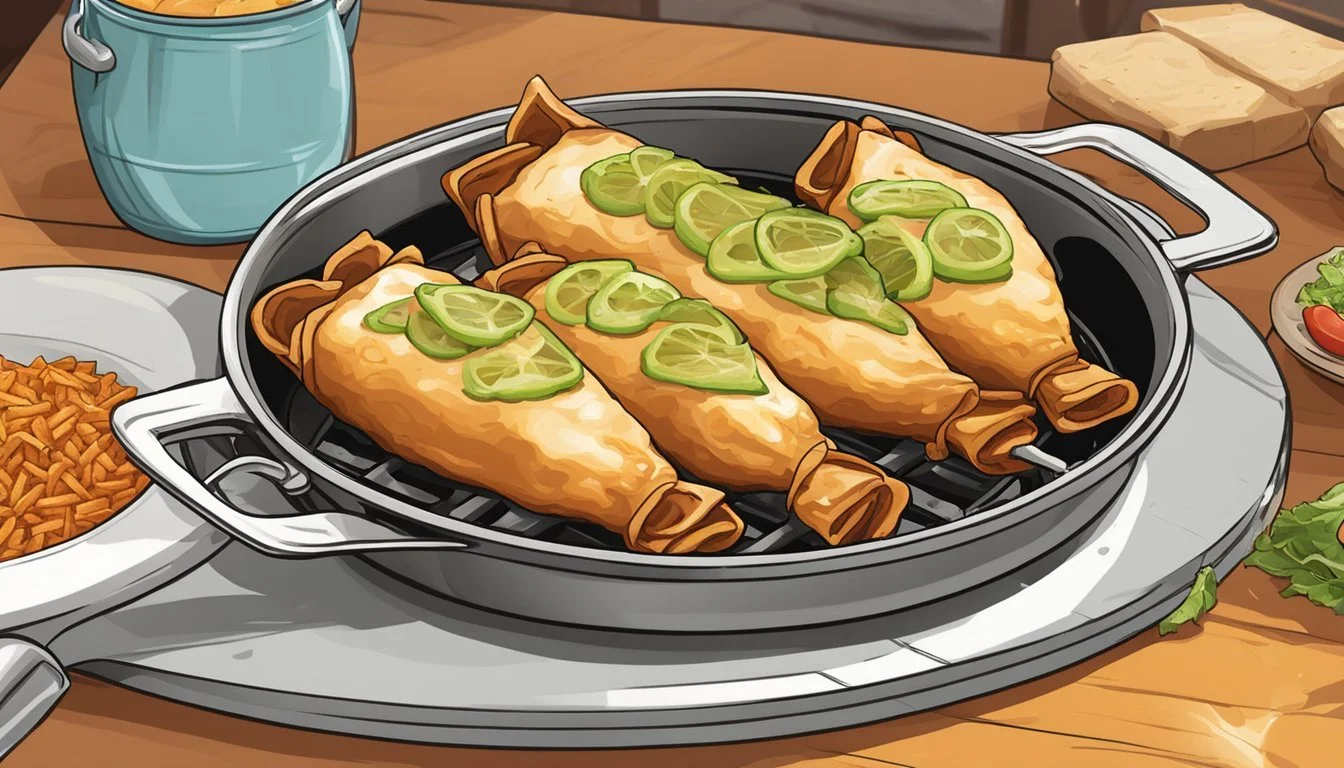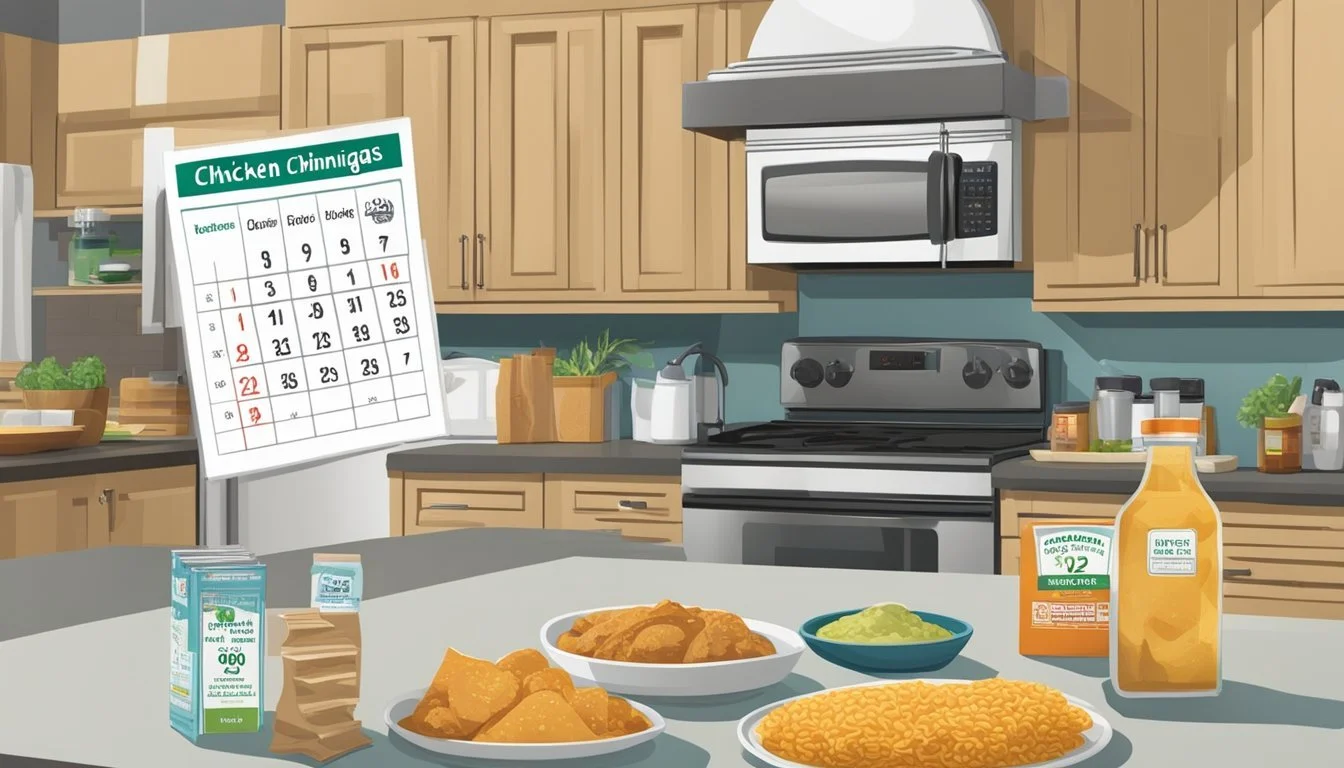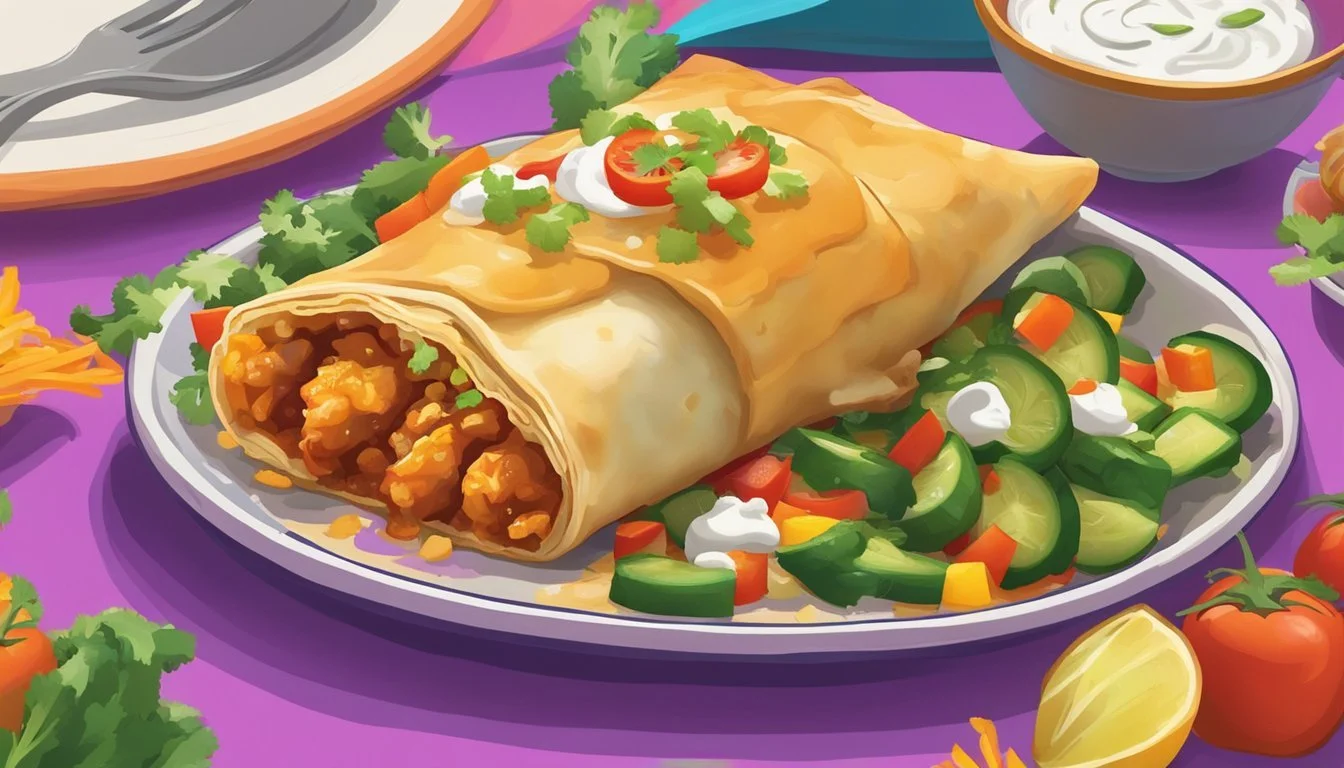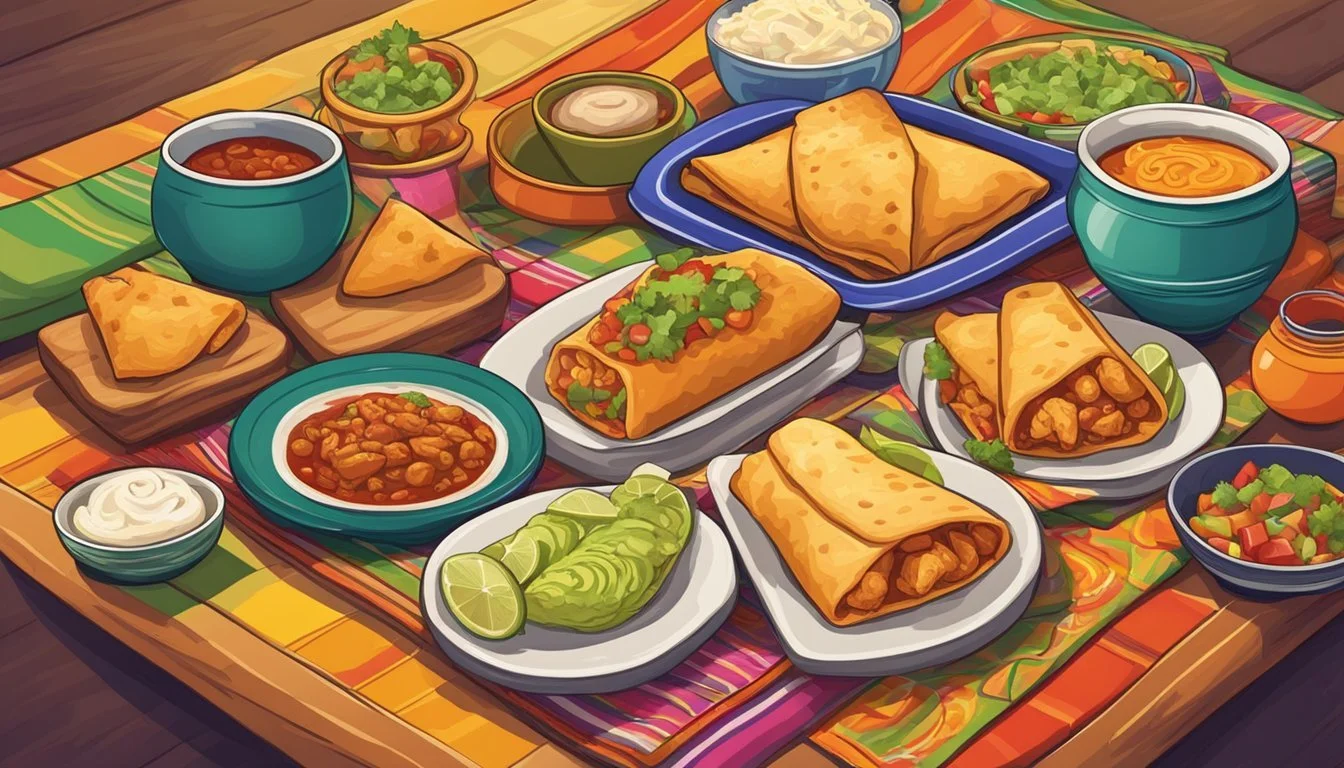How Long Do Chicken Chimichangas Last?
Storage Tips and Safety Guide
Chicken chimichangas, a delicious staple in Mexican and Tex-Mex cuisine, are enjoyed by many for their crispy exterior and flavorful filling. These delightful treats, whether homemade or from your favorite local restaurant, can be a convenient meal option for several days. Properly stored, chicken chimichangas can last in the refrigerator for up to 4 days.
For those who love to prepare meals in advance, chicken chimichangas can also be frozen. When wrapped tightly and stored in an airtight container, they retain their flavor and texture for up to three months. This makes them an excellent choice for meal prepping or easy weeknight dinners that require minimal effort.
When reheating, it's essential to ensure they reach an internal temperature of 165 degrees F to guarantee safety and maintain that perfect balance of crispy exterior and savory interior. This guide will dive into the best practices for storing, reheating, and enjoying chicken chimichangas at their best.
What Are Chicken Chimichangas?
Chicken Chimichangas are a popular Tex-Mex dish featuring various ingredients wrapped in a flour tortilla and either fried or baked. They are similar to burritos but typically crispier due to their cooking method.
Ingredients and Traditional Preparation
A Chicken Chimichanga typically includes shredded chicken, cheese, beans, and rice, seasoned with cumin and chili powder.
Flour tortillas are the wrapper of choice. The filling is placed in the center, and the tortilla is folded into a rectangular shape.
The filled tortillas are then either deep-fried or baked.
Frying results in a crispy, golden-brown exterior, while baking provides a slightly lighter, but still crispy, texture.
The Difference Between Chimichangas and Burritos
While Chimichangas and Burritos share similar ingredients like shredded chicken, cheese, and beans, their preparation sets them apart.
Burritos are typically served soft, while Chimichangas are fried or baked to achieve a crispy texture.
The cooking method gives Chimichangas a distinct crunch, differentiating them from the more pliable burritos.
In terms of fillings, both can vary widely, but Chimichangas often include additional seasonings and are sometimes topped with sauces like sour cream or salsa.
Shelf Life of Chicken Chimichangas
Chicken Chimichangas, when stored correctly, can last several days refrigerated or even months when frozen. Key factors such as ingredients and storage methods greatly impact their shelf life.
Factors Influencing Shelf Life
The main components of Chicken Chimichangas—chicken, cheese, and vegetables—each have specific shelf life spans. Protein items like chicken should be handled with care, as they can spoil quickly if not stored properly. Cheese and other dairy products also significantly influence longevity, needing refrigeration to remain safe.
Vegetables within the Chimichangas might wilt or deteriorate faster than other ingredients, affecting overall freshness. The use of oil in cooking can add a longer-lasting crispy texture, but proper storage is crucial to avoid spoilage. Dairy products and cooked chicken usually last about 3–4 days in the refrigerator.
Refrigeration vs. Freezing
When opting for refrigeration, ensure Chicken Chimichangas are stored in airtight containers to maximize freshness. Refrigerated Chimichangas generally last 3–4 days. For prolonged storage, freezing is an effective solution.
Freezing Chicken Chimichangas helps retain their quality for up to 3 months. To freeze, wrap each Chimichanga individually in plastic wrap or aluminum foil, then place them in a freezer bag. Frozen Chimichangas should be thawed in the refrigerator before reheating.
Using the methods above ensures that Chicken Chimichangas maintain their flavor and safety for consumption, whether they are part of a daily meal or prepared as a freezer meal for later use.
Proper Storage Practices
Proper storage of chicken chimichangas is essential to maintain their flavor and safety. Here’s how to store freshly made chimichangas and guidelines for freezing and thawing them effectively.
How to Store Freshly Made Chimichangas
Freshly made chicken chimichangas should be cooled to room temperature before storage. Place them in an airtight container to prevent moisture loss and bacterial contamination. They can be safely stored in the refrigerator at 40°F (4°C) or lower for up to 3-4 days.
For optimal quality, separate chimichangas with parchment paper or foil to avoid sticking. Make sure to reheat thoroughly before consuming, aiming for an internal temperature of 165°F (74°C).
Freezing and Thawing Guidelines
Chicken chimichangas can be frozen for up to 2-3 months with proper preparation. Wrap each chimichanga individually in plastic wrap and then in aluminum foil to prevent freezer burn. Place the wrapped chimichangas in a single layer in a freezer-safe bag or container.
When ready to eat, thaw chimichangas in the refrigerator for 12-24 hours before reheating. To reheat, bake in a preheated oven at 375°F (190°C) for 20-25 minutes or until heated through. This method helps retain their crispy texture and ensures they are safe to consume.
Reheating and Serving Chicken Chimichangas
To enjoy chicken chimichangas as if they were freshly made, reheating methods are crucial, alongside the right condiments and sides to elevate the meal.
Methods to Reheat without Sacrificing Quality
Oven: Preheat the oven to 350°F (175°C). Wrap the chimichangas in aluminum foil to keep moisture inside. Place them on a baking sheet and heat for 20-25 minutes. To crisp the outside, remove the foil during the last 5 minutes.
Air Fryer: Preheat the air fryer to 350°F. Place the chimichangas in the basket, making sure they don't overlap. Cook for 5-10 minutes, flipping once midway to ensure even heating.
Skillet: Warm a skillet over medium heat and add a small amount of oil. Place chimichangas in the skillet and cover, heating for about 4-5 minutes on each side until crisp and heated through.
Microwave: For a quick option, wrap chimichangas in a damp paper towel and microwave on medium power for 1-2 minutes. Note that this method won’t retain crispiness as effectively.
Suggested Condiments and Sides
Sour Cream: Adding a dollop of sour cream brings a cool, creamy contrast to the crispy and savory chimichangas.
Guacamole: Fresh guacamole adds a rich, buttery texture and complements the flavors of the chimichangas.
Salsa: A side of vibrant salsa provides a tangy, zesty lift to the meal. Use mild, medium, or hot salsa based on personal preference.
Mexican Rice: This classic side dish offers a mildly savory starch component that pairs perfectly with chimichangas.
Refried Beans: Creamy and flavorful, refried beans add protein and depth to the meal.
Shredded Lettuce: Fresh shredded lettuce offers a crisp, refreshing balance to the rich and hearty chimichangas.
Health and Safety Considerations
When it comes to storing and consuming chicken chimichangas, understanding spoilage indicators and best handling practices can help ensure safety and freshness. Proper food safety measures are essential to extend the shelf life and prevent foodborne illnesses.
Identifying Spoilage
Spoiled chicken chimichangas can pose serious health risks.
Common indicators of spoilage include an off-putting odor, discoloration, and visible mold growth.
The texture might become slimy, and the filling could appear dry or have an unusual color.
It's important to note that spoilage can occur even if the chicken chimichangas have been properly stored.
Properly refrigerated chimichangas typically last 3-4 days.
Freezing can extend shelf life to 2-3 months, but always ensure they are reheated thoroughly.
Best Practices in Handling and Consumption
To prevent cross-contamination, always use separate cutting boards for raw chicken and other ingredients.
Ensure hands and utensils are washed thoroughly with hot, soapy water.
Store prepared chimichangas in airtight containers to maintain freshness.
When reheating, make sure the internal temperature reaches at least 165°F (74°C) to kill any harmful bacteria.
If using dairy in your chimichangas, pay extra attention to refrigeration to prevent spoilage.
When in doubt, it's safer to discard any chimichangas that seem questionable.
Following these best practices can reduce risks and help keep your meals safe and enjoyable.
Creative Variations and Substitutions
Chicken chimichangas can be tailored to suit various tastes and dietary needs. Offering both alternative fillings and comparing homemade to restaurant-style versions can help suit different preferences.
Alternative Fillings and Dietary Adjustments
There are numerous fillings that can replace the traditional chicken. Ground beef, shredded beef, or shredded pork offer richer, heartier options for meat lovers.
For a healthier choice, turkey is a lean substitute. Vegetarian versions can include a mix of beans, corn, bell peppers, and zucchini. Adding rice can also enhance the texture and flavor, especially authentic Mexican rice for a traditional touch.
Incorporate various cheeses like Monterey Jack or cheddar to add more flavors. Spice the filling with cumin, chili powder, and garlic powder. For a twist, green chilis or salsa can introduce a Tex-Mex flair.
Homemade vs. Restaurant-Style Chicken Chimichangas
Homemade chimichangas offer customization, allowing control over ingredients and serving sizes. Using olive oil for baking instead of frying reduces fat content. Home cooks can experiment with different fillings and cooking techniques.
Restaurant-style chimichangas often involve deep-frying, resulting in a crunchier exterior. They might be served with sides like Mexican rice or refried beans, providing a more complete meal experience. Typically, these versions are larger and more calorically dense.
Choosing between homemade and restaurant-style depends on personal preferences for health, convenience, and authenticity. Homemade versions allow for substitutions and healthier adjustments, while restaurant-style can provide a classic, indulgent experience.
Cultural Significance and Popular Variants
Chimichangas hold a cherished place in both traditional Mexican cuisine and Tex-Mex culinary practices. There are fascinating differences in how these versions are prepared and enjoyed, reflecting their cultural origins and regional influences.
Traditional Mexican Chimichangas vs. Tex-Mex Versions
Traditional Mexican chimichangas typically involve shredded beef or chicken, refried beans, and cheese wrapped in a flour tortilla and deep-fried. Seasonings like cumin, chili powder, and garlic are commonly used. Authentic Mexican versions often use local ingredients and traditional recipes, retaining a more rustic and authentic flavor.
Tex-Mex adaptations, on the other hand, incorporate American influences. Ingredients such as Monterey Jack cheese, salsa, and jalapeños are added for extra flavor. These versions often come with a side of Mexican rice, guacamole, and other Tex-Mex staples, adding a distinctive twist to the original recipe.
Regional Preferences and Adaptations
The way chimichangas are enjoyed can vary significantly from one region to another. In southern US states like Texas and Arizona, Tex-Mex versions dominate, focusing heavily on bold flavors and generous portions. These regions also experiment with daring combinations such as seafood or vegetarian options, highlighting their innovative approach.
In contrast, Mexican regions may stick more closely to traditional methods. The deep-fried exterior remains consistent, but the fillings reflect local ingredients and culinary practices. For example, some areas may use different types of meat or local vegetables to create unique variations.
Each version of chimichanga tells a story through its ingredients and preparation methods, showcasing the diversity and cultural richness inherent in this beloved dish.



